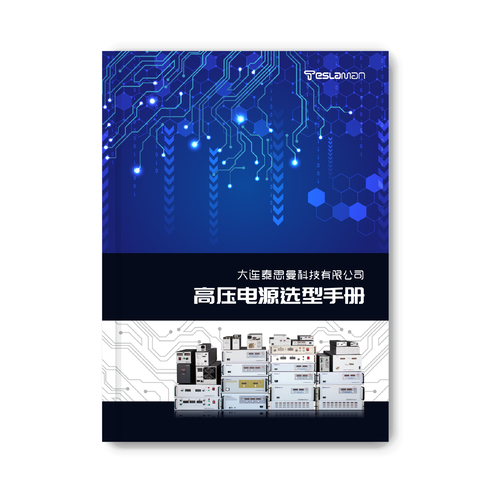Innovative Design of High-Voltage Power Supplies for Semiconductor Testing
Abstract: This article focuses on the innovative design of high-voltage power supplies for semiconductor testing, delving deeply into its significance in the semiconductor industry, the challenges it faces, as well as the innovative design ideas and implementation methods. Through the analysis of key technologies, it demonstrates how to enhance the performance of high-voltage power supplies to meet the increasingly complex semiconductor testing requirements, providing a useful reference for the technological development in the field of semiconductor testing.
I. Introduction
With the rapid development of semiconductor technology nowadays, the performance and complexity of semiconductor devices are constantly increasing. Semiconductor testing, as a crucial link in ensuring product quality and reliability, imposes extremely stringent requirements on high-voltage power supplies. Traditional high-voltage power supply designs have gradually revealed numerous limitations when faced with the testing of new types of semiconductor devices, such as insufficient precision, poor stability, and slow response speed. Therefore, the innovative design of high-voltage power supplies for semiconductor testing is of great practical significance.
II. Requirements of Semiconductor Testing for High-Voltage Power Supplies
During the semiconductor testing process, high-voltage power supplies are required to provide precise, stable, and flexibly adjustable high-voltage signals for the devices under test. In some high-precision semiconductor parameter tests, the output voltage precision of the high-voltage power supply is required to reach the millivolt level or even higher to accurately determine the electrical characteristics of the devices. Meanwhile, since semiconductor testing often needs to be carried out under different working conditions and frequencies, high-voltage power supplies must have a fast response speed, be able to switch and adjust the voltage in a short time, and maintain the stability of the output voltage during long-term testing to avoid deviations in test results caused by power supply fluctuations. In addition, the output voltage range and current capacity of high-voltage power supplies also need to have good adaptability for different types and specifications of semiconductor devices.
III. Limitations of Traditional High-Voltage Power Supply Designs
Traditional high-voltage power supply designs are usually based on relatively fixed circuit architectures and control methods. In terms of circuit topology, common ones such as linear regulated power supplies and simple switching power supplies often have the problem of low efficiency when outputting high voltages. A large amount of energy is dissipated in the form of heat, which not only increases energy consumption but also imposes higher requirements on the power supply's heat dissipation system. In terms of control strategies, traditional methods such as PID control are difficult to achieve rapid and precise adjustments when faced with complex load changes and high-precision requirements. For example, during semiconductor testing, when the equivalent capacitance of the device under test changes, traditional high-voltage power supplies may not be able to adjust the output voltage in a timely manner, resulting in increased test errors. Moreover, traditional high-voltage power supplies have a relatively low degree of digitalization, and parameter setting and monitoring are not flexible and convenient enough to meet the needs of modern semiconductor testing for automation and intelligence.
IV. Innovative Design Ideas and Key Technologies
(A) Advanced Circuit Topology Structures
To improve the efficiency and performance of high-voltage power supplies, a new full-bridge LLC resonant converter topology structure can be adopted. This topology structure utilizes the resonant characteristics of resonant inductors, capacitors, and transformers, enabling high-voltage output while significantly improving the efficiency of the power supply and reducing energy losses. By reasonably designing the resonant parameters, the switching tubes can be turned on and off under zero-voltage switching (ZVS) or zero-current switching (ZCS) conditions, reducing switching losses and improving the overall efficiency of the power supply. Meanwhile, the full-bridge structure can provide a relatively large power output, meeting the power capacity requirements of high-voltage power supplies in semiconductor testing.
(B) High-Precision Digital Control Strategies
Digital signal processors (DSPs) or field-programmable gate arrays (FPGAs) are used as the control core to achieve digital and precise control of high-voltage power supplies. Based on advanced control algorithms, such as model predictive control (MPC), real-time prediction and optimized adjustment of the output voltage of the power supply can be realized. The MPC algorithm establishes a mathematical model of the power supply system, combines the current input state and the set output target, predicts the system behavior at multiple future moments, and selects the optimal control strategy. Compared with traditional PID control, MPC can better cope with uncertainty factors such as load changes and power supply parameter drift, improving the precision and stability of voltage output. Meanwhile, digital control also facilitates the implementation of multiple protection functions, such as overvoltage, overcurrent, and short-circuit protection, enhancing the reliability of high-voltage power supplies.
(C) Intelligent Human-Machine Interaction and Monitoring Systems
To meet the needs of automation and intelligence in semiconductor testing, an intelligent human-machine interaction and monitoring system is designed. Through touch screens or host computer software, operators can conveniently set the output parameters of high-voltage power supplies, such as voltage, current, and frequency, and monitor the working status of the power supplies in real time, including information such as output voltage, current waveforms, and temperature. Meanwhile, this system also has data storage and analysis functions, which can record the power supply parameters and the response data of the devices under test during the testing process, providing a basis for subsequent test analysis and quality assessment. In addition, through network communication interfaces, high-voltage power supplies can be integrated with the entire semiconductor testing system to achieve remote control and multi-device collaborative work, improving testing efficiency and flexibility.
V. Implementation and Test Verification of Innovative Design
During the actual implementation of the innovative design, high-performance electronic components, such as high-voltage power MOSFETs, high-frequency transformers, and high-precision sampling resistors, need to be carefully selected to ensure the performance indicators of the circuit. Meanwhile, attention should be paid to the PCB layout design to optimize the circuit wiring and grounding methods and reduce electromagnetic interference. After the completion of hardware design and fabrication, strict test verification is carried out on the high-voltage power supplies. By using high-precision voltage measuring instruments, oscilloscopes, and other equipment, the performance indicators such as the output voltage precision, stability, and response speed of the power supplies are tested. The test results show that the output voltage precision of the innovatively designed high-voltage power supplies for semiconductor testing can reach within ±0.05%, the response time is shortened to the microsecond level, and stable output can be maintained during long-term operation, fully meeting the strict requirements of modern semiconductor testing for high-voltage power supplies.
VI. Conclusion
The innovative design of high-voltage power supplies for semiconductor testing plays a key role in promoting the development of the semiconductor industry. By adopting innovative technologies such as advanced circuit topology structures, high-precision digital control strategies, and intelligent human-machine interaction and monitoring systems, the problems existing in traditional high-voltage power supply designs can be effectively solved, and the performance indicators of high-voltage power supplies can be significantly improved, providing more precise, stable, and efficient high-voltage power supply solutions for semiconductor testing. With the continuous progress of semiconductor technology, the innovative design of high-voltage power supplies will continue to develop to adapt to more complex and stringent testing requirements in the future, providing solid technical support for the technological innovation and quality improvement of the semiconductor industry.




















